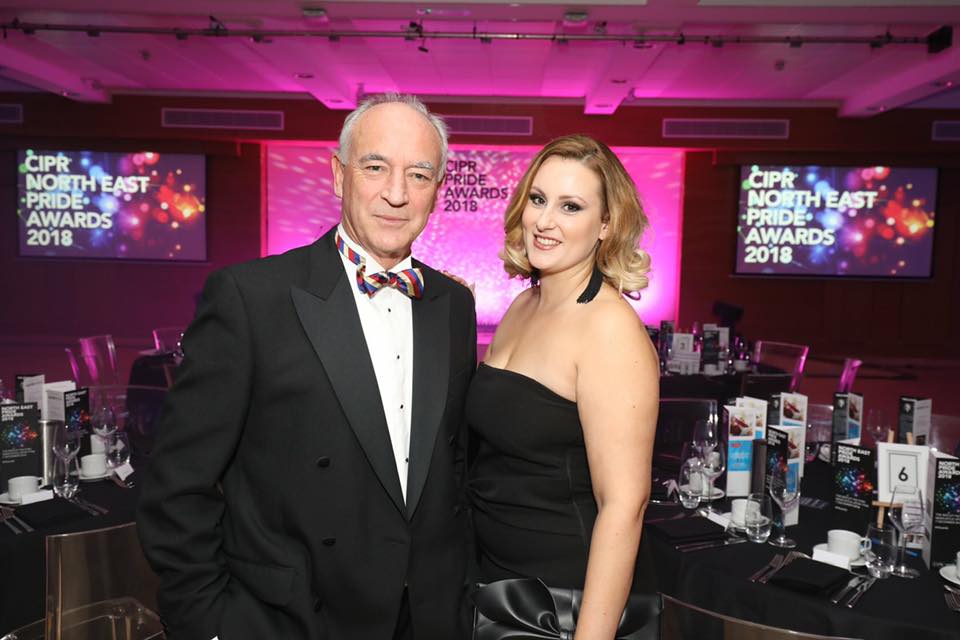Did you know you’re taught the same models and frameworks PR practitioners use to enter (and win!) industry awards?
Over the past 14 months, the world and life as we once knew it has drastically changed due to the pandemic. In both our personal and professional lives, we can all name at least a handful of special events that were cancelled, moved to being exclusively online, or had their format altered to account for social distancing and keep delegates and other attendees safe.
The PR industry was not exempt from these changes, with many highlights of the calendar being cancelled, including the Chartered Institute of Public Relations’ PRide Awards.

Historically, June marks the start of the awards season in the PR event’s calendar, with some of the industry’s biggest and brightest talents – from freelancers and independent practitioners, to agencies, consultancies and in-house teams both large and small – coming together at a glittering black-tie evening event to celebrate the achievements of the past year.
Each year, from international celebrations to national and even on a smaller regional level, many PR practitioners and teams up and down the country look forward to coming together to mark their achievements over the past 365 days.
Last year, however, the CIPR took the difficult decision to cancel all of its PRide Awards across the country due to the pandemic. The good news is that the Pride Awards are making a return (albeit in a different Covid-secure format) in 2021!
A statement on the CIPR website reads:
The CIPR PRide Awards are back for 2021 to recognise the outstanding work you’ve been delivering across the UK in the last 24 months. We’re shining the spotlight on the best PR teams and campaigns in nine of the UK’s regions, helping you increase your visibility, impress clients and attract new business. Give your team the boost they need after a year like no other and enter the CIPR PRide Awards by 29 June. We’ll celebrate your achievements at our virtual free-to-attend award ceremonies later this year.
Sounds pretty impressive, right? So, what does it take to win one of these awards?
Well, I am in the very lucky position to have been on both sides of the fence. During my career of working in PR, not only have I won awards for my work on a regional and national level (and on a personal level too – I was once named the CIPR’s Young Communicator of the Year at both the PRide and Excellence Awards), I’ve also had the pleasure of judging these awards too. Not to mention, when the CIPR rolled out a brand-new category for Influencer Marketing, I was one of two working PR professionals who actually wrote the entry requirements and marking criteria, and now I can share with you what it takes to be a winner.
Essentially, it comes down to being able to clearly communicate what your campaign was all about: what research you did and how this informed your strategy, your objectives and the tactics you used, and what results you achieved.
Sound familiar? It should do! Basically, real-life working PR practitioners are using the same planning frameworks that you’re taught at Newcastle University both in their day-to-day work, but also in writing award-winning entries that will “help increase visibility, impress clients and attract new business” – a very interesting proposition in a competitive marketplace!
What do these frameworks look like? It’s SOSTAC! So, if you want to pass some of your PR planning assignments as well as potentially winning some awards once you enter the world of work, remember Situation, Objectives, Strategy, Tactics, Actions and Control.
Situation:
What is the environment your campaign is taking place in? Do your research to find out what’s happening both internally and externally to your organisation. Don’t forget your PESTLE and to plot a SWOT analysis.
Objectives:
Now that you know what is happening in and around your organisation at the time of planning your campaign, what is it you want to achieve through your PR and communications? Make your objectives SMART – specific, measureable, achievable, realistic and timely.
Remember, if you can’t think how you’ll measure and evaluate your objective at the beginning of your campaign, don’t write it down as an objective. Also think about how your SMART communication objectives help to support wider corporate objectives for your campaign to be really meaningful.
Strategy:
What’s the big idea for your campaign? Can you create audience personas – who are you trying to communicate with? Who are your key publics, how important are they, and how much time or effort do you need to give to engaging with them – remember Johnson and Scholes Stakeholder Mapping?
Then develop your messaging and tone of voice that will resonate with your audience. Don’t forget AIDA and DRIP (Awareness, Interest, Desire, Action and Differentiate, Remind/Reassure, Inform, Persuade respectively). Think YSIC (Why Should I Care?), WIIFM (What’s In It For Me) and KFD (Know Feel Do).
What is it you want your audience to think, feel or do as a result of your campaign? Remember, the most successful PR campaigns are about awareness and behavioural change – not just editorial coverage or social media reach.
Tactics:
This is where your 3 E’s and a Pub within the PESO setting comes into play. Don’t forget to think about editorial, electronic, events, publications and mixed media, across the spectrum of paid, earned, shared and owned media.
Remember, when creating content and channel planning, always have your audience and objectives in mind. Will your communications reach the right audience, will they be able to decode and understand your message, will they engage with the content and ultimately help you to achieve your objectives?
Action:
You now know what you want to do and how you’re going to do it, but when it comes to rolling out your campaign, you need a plan of action. What needs to happen and when, who is in charge of that element of your campaign and how much will it cost. Remember, when we’re talking about cost, it’s important to think about the 3M’s – money, manpower and machines.
It’s not just about the pounds (or any other currency) when it comes to cost; consider the capacity of your team and how much time they’ll need to spend on completing their actions, as well as the cost of any equipment, machinery or other bought-in services that need to be accounted for to help bring your campaign to life. Once you have this information, plot it all onto a GANNT chart working backwards from your campaign launch date (or D-Day) to make sure your activity is mapped out by ownership, responsibility, time and cost.
Control:
Finally, think about how you will measure and evaluate the success of your PR campaign. Using your SMART objectives, have you achieved what you set out to do? If not, can you perform a gap analysis? If you haven’t achieved your objectives, how far away were you from hitting your KPIs and can you explain why this didn’t happen, or even identify learnings for the future from this analysis exercise?
Remember, there’s so much more to measurement and evaluation than just the number of pieces of media coverage achieved or likes to a social media profile. Look at The Barcelona Principles and AMEC’s integrated framework. Think on a bigger picture and give consideration to how your inputs, outputs, outtakes and outcomes will deliver organisational impact.
And finally, here’s a ‘fun’ fact for you: when judging the CIPR’s awards, any entry that uses the archaic AVEs as a measurement metric, are automatically awarded a score of zero in the measurement and evaluation section. But by now, you all know that AVEs is a worthless metric in PR.

